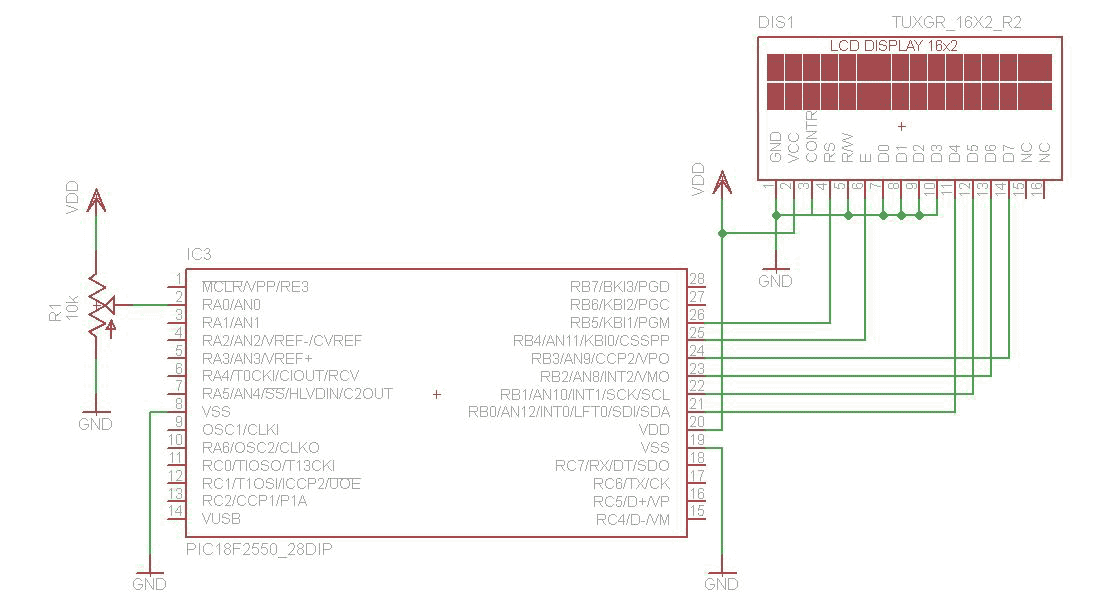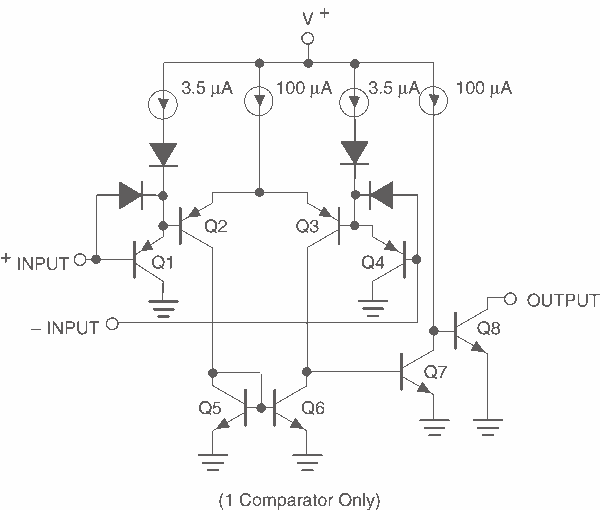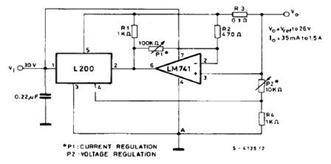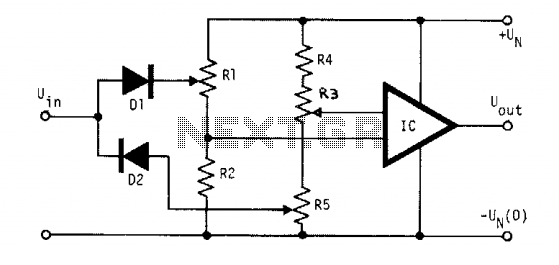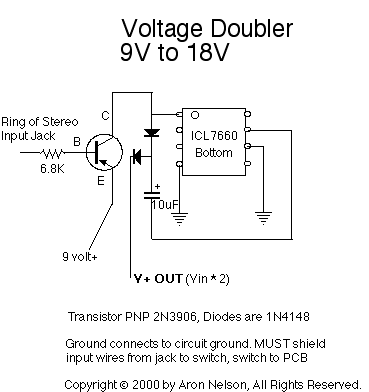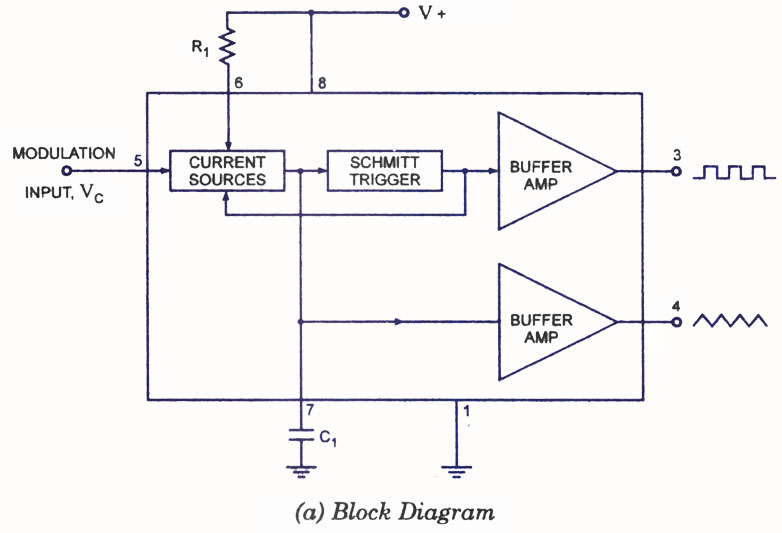
Low Voltage Step-Down Converter
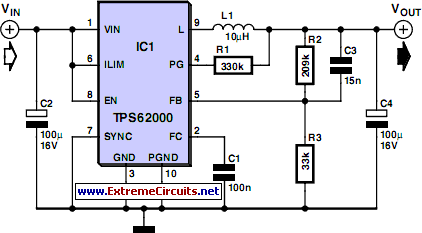
In certain scenarios, a 5-V supply voltage is available, but a portion of the circuit requires a lower supply voltage. The TPS62000 series voltage regulator from Texas Instruments is an appropriate solution for applications with a current consumption of less than 600 mA. This device facilitates the construction of a compact and highly efficient voltage converter. A sample layout created by the author can be found on the Elektor website. The TPS62000 provides an internal reference voltage of 0.45 V, which can be utilized to set the output voltage between 0.5 V and 5 V using resistors R2 and R3. The output voltage can be calculated using the formula: Vout = 0.45 V (1 + R2 / R3). For lower output voltages, an inductor value of 10 μH is recommended, although a 22 μH inductor is preferable for output voltages of 3.3 V or higher. The input voltage can range from 2 V to 5.5 V and must exceed the desired output voltage. For an output voltage of 3.3 V, the specified component values and an input voltage of 5 V are required. To further reduce the component count, a variant of the TPS62000 with a fixed output voltage can be utilized, with available voltages including 0.9 V, 1.0 V, 1.2 V, 1.5 V, 1.8 V, 1.9 V, 2.5 V, and 3.3 V. This option allows for the omission of resistors R2, R3, and capacitor C3, enabling a direct connection to pin 5.
The TPS62000 voltage regulator is designed to efficiently convert a higher input voltage to a lower output voltage, making it ideal for battery-powered devices and other applications where power efficiency is critical. This device operates using a synchronous buck converter topology, which allows for high efficiency and low output ripple. The internal reference voltage of 0.45 V is essential for setting the desired output voltage through external resistors. By adjusting the resistor values R2 and R3 according to the formula provided, the output voltage can be finely tuned to meet specific requirements.
When selecting the inductor L1, it is crucial to consider the output voltage and current requirements. A 10 μH inductor is suitable for lower output voltages, while a 22 μH inductor is recommended for outputs of 3.3 V and above to ensure stable operation and minimize output voltage ripple. The input voltage range of 2 V to 5.5 V provides flexibility for various applications, but it is important to ensure that the input voltage remains above the desired output voltage to maintain proper regulation.
The option to use fixed-output variants of the TPS62000 series simplifies the design process by eliminating the need for external resistors and capacitors, thereby reducing the overall component count and PCB space. This is particularly beneficial in compact designs where space is at a premium. The available fixed output voltages cover a range that accommodates many common digital circuits, enhancing the versatility of the TPS62000 series in powering various electronic devices. Overall, the TPS62000 voltage regulator family offers a reliable and efficient solution for applications requiring a step-down voltage conversion.Sometimes you have a situation where you have a 5-V supply voltage but part of the circuit needs a lower supply voltage. A voltage regulator from the Texas Instruments TPS62000 family [1] is a good choice for this if the current consumption is less than 600 mA.
You can thus use this device to build a very compact, highly efficient voltage converte r. A sample layout generated by the author is available as a file on the Elektor website. The TSOP62000 provides an internal reference potential of 0. 45 V, which can be used to set the output voltage in the range of 0. 5 V to 5 V by means of resistors R2 and R3. The formula for this is: Vout = 0. 45 V (0. 45 V) G— (R2 / R3) For relatively low voltages, the value of inductor L1 should be 10 H, but a value of 22 H is better if the output voltage is 3. 3 V or more. The input voltage can be anywhere in the range of 2 V to 5. 5 V, and of course it has to be higher than the desired output voltage. The output voltage is 3. 3 V with the indicated component values and an input voltage of 5 V. If you want to reduce the component count even further, you can use a member of the family with a fixed output voltage.
The available voltages are 0. 9, 1. 0, 1. 2, 1. 5, 1. 8, 1. 9, 2. 5, and 3. 3 V. With this approach you can omit R2, R3 and C3, so the output can be connected directly to pin 5. 🔗 External reference
The TPS62000 voltage regulator is designed to efficiently convert a higher input voltage to a lower output voltage, making it ideal for battery-powered devices and other applications where power efficiency is critical. This device operates using a synchronous buck converter topology, which allows for high efficiency and low output ripple. The internal reference voltage of 0.45 V is essential for setting the desired output voltage through external resistors. By adjusting the resistor values R2 and R3 according to the formula provided, the output voltage can be finely tuned to meet specific requirements.
When selecting the inductor L1, it is crucial to consider the output voltage and current requirements. A 10 μH inductor is suitable for lower output voltages, while a 22 μH inductor is recommended for outputs of 3.3 V and above to ensure stable operation and minimize output voltage ripple. The input voltage range of 2 V to 5.5 V provides flexibility for various applications, but it is important to ensure that the input voltage remains above the desired output voltage to maintain proper regulation.
The option to use fixed-output variants of the TPS62000 series simplifies the design process by eliminating the need for external resistors and capacitors, thereby reducing the overall component count and PCB space. This is particularly beneficial in compact designs where space is at a premium. The available fixed output voltages cover a range that accommodates many common digital circuits, enhancing the versatility of the TPS62000 series in powering various electronic devices. Overall, the TPS62000 voltage regulator family offers a reliable and efficient solution for applications requiring a step-down voltage conversion.Sometimes you have a situation where you have a 5-V supply voltage but part of the circuit needs a lower supply voltage. A voltage regulator from the Texas Instruments TPS62000 family [1] is a good choice for this if the current consumption is less than 600 mA.
You can thus use this device to build a very compact, highly efficient voltage converte r. A sample layout generated by the author is available as a file on the Elektor website. The TSOP62000 provides an internal reference potential of 0. 45 V, which can be used to set the output voltage in the range of 0. 5 V to 5 V by means of resistors R2 and R3. The formula for this is: Vout = 0. 45 V (0. 45 V) G— (R2 / R3) For relatively low voltages, the value of inductor L1 should be 10 H, but a value of 22 H is better if the output voltage is 3. 3 V or more. The input voltage can be anywhere in the range of 2 V to 5. 5 V, and of course it has to be higher than the desired output voltage. The output voltage is 3. 3 V with the indicated component values and an input voltage of 5 V. If you want to reduce the component count even further, you can use a member of the family with a fixed output voltage.
The available voltages are 0. 9, 1. 0, 1. 2, 1. 5, 1. 8, 1. 9, 2. 5, and 3. 3 V. With this approach you can omit R2, R3 and C3, so the output can be connected directly to pin 5. 🔗 External reference
